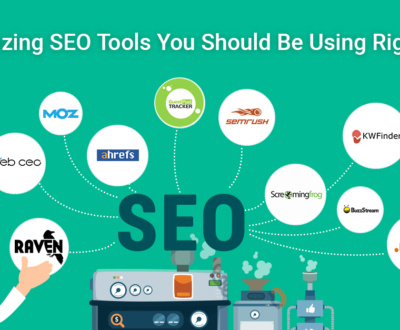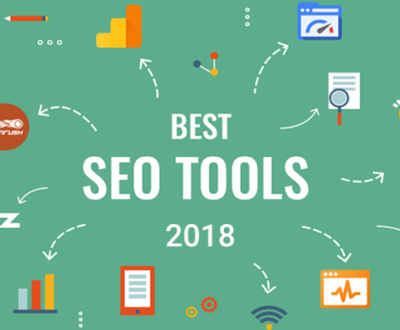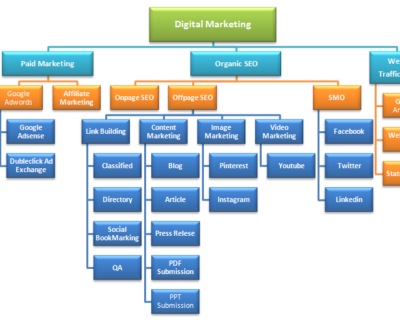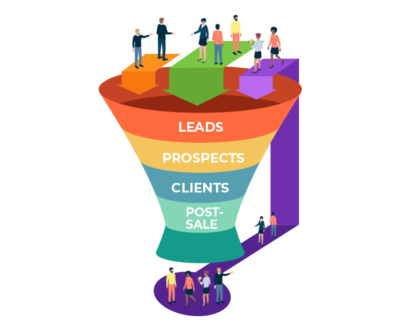
Starting a new business can seem very daunting. However, with consistent effort, effective management, intuitive thinking, and a determined startup accountant, you can successfully set up your new business. When you are starting out, it is also very important to set up a strong foundation for your business to help you stay organized and focused on growth.
Remember: Growing your business is like taking care of your child; you must have a suitable environment for the child to grow in and to nurture in, and you must ensure that your child gets the right nutrients for them to thrive.
How can this article help you grow your business?
This article will outline quick strategies that will help you grow your business, our main focus is to educate you about:
- The Stages of Business Growth
- Planning for Growth
- Managing Growth
1. What are the stages of Business Growth
Your business will go through several stages of growth during its life, each stage comes with its own unique challenges. Our team of skilled Business Advisors, at Clear House Accountants, have not only identified the common issues that you might face but also their potential solutions.
A. First phase: The Startup
The startup phase of a business is a very exciting time for a business, as business ideas are initiated and put into action.
- Challenges:
During the startup phase, the most common problems businesses face are:
- Finance- businesses struggle with their finances as they have to incur expenses to set up the business without any major sources of revenue or funding.
- Brand awareness- businesses struggle to establish their brand name as they do not have a business history or any reputation.
- Businesses can engage in unnecessary activities that deviate from their business plan and spread their resources too thin, due to lack of experience and resources.
- Solutions:
This initial phase is the hardest stage for a business, not only will you be short on finance, but the lack of brand visibility, resources and customers magnify the problems. However, there are several solutions you can implement to mitigate these.
- Plan and manage your cash flow better.
- Gain insight from customers, family, or friends and make improvements accordingly.
- Start focusing on short term and achievable targets while keeping the long term goals in mind.
- Prepare an in-depth budget to plan for financing activities and investing activities.
- Hire a marketing agency or use marketing freelancers to attract better higher-value clients.
It’s prudent for startup businesses to utilise the services of an accounting firm from the start to set up a strong foundation that will be key to their success. A competitive startup accounting firm will guide you in improving control over your cash flow, strategise for unforeseen scenarios, improve profitability through performance monitoring all the while helping you identify potential tax reliefs and savings.
B. Second Phase: Business Growth
Once a business has successfully passed through the startup stage, it needs to start preparing for growth. At this stage, a business will see growth through increased revenue, more customers, higher profit margins, a round of funding, higher brand visibility etc. Growth has to be managed, if you fail to manage growth it becomes extremely costly to generate again.
- Challenges:
The growth phase comes with its own unique challenges for business owners:
- Lack of resources – A business can be growing but still struggle to match resources with its growth, this can be due to a lack of funds, time constraints or a lack of planning.
- Increased workload – As the resources of a business get stretched out so does the workload per employee.
- Inconsistent growth – Growth if not managed properly can become unstable and volatile, this can result in huge issues such as excessive resources, poor customer service etc.
- A decline in performance – Factors such as an increased demand coupled with reduced resources and more workload can create a higher number of errors resulting in lost performance.
- Solutions:
Here are some solutions you can apply during your growth phase to mitigate some of the problems:
- Hire a passionate accountant who is equally interested in your business as you are. Your accountant will help you manage your finances and resources efficiently. They will also set up KPI’s to determine if your growth is sustainable and what key metrics are the most valuable to measure your business growth.
- Evaluate your company’s processes on a regular basis to make improvements to them and make them more efficient to reduce the need for manpower.
- Your accountant will recommend that you use a cloud accounting software along with a reporting and management system which will enable you to predict sales, control inventory and manage resources. You should use this recommendation.
- Monitor your business to make sure your activities are in line with company goals and objectives by working on your business growth plans and designing an effective strategy for its implementation.
- Perform regular business health checks in order to constantly monitor business performance to make sure that your growth is not toxic and is sustainable. A business health check is a key to making sure that the business has no serious issues that can hinder positive business growth. Our in-house accounting experts have curated an in-depth guide to explain the effective strategies that can be used to help maintain the health of your business.
Related: Learn how UK businesses are optimizing tax incentives for the growth of their business.
Video: Tips and Tactics To Propel Your Business Growth
We have prepared an in-depth video with Small Business Growth Tips for Different Business Stages. Watch the Video to Learn More About the Different methods to achieve Small Business Growth.https://www.youtube.com/embed/6GZOxBKgHVQ
C. Third Phase: Business Expansion
In order to avoid stagnation of growth, businesses look to expansion as a solution. This can also help in increasing global brand visibility and improve market presence. In this phase, your focus should be on sustaining business performance while increasing global or local diversification and expansion into new markets, territories or products.
- Challenges:
The third stage of business growth is all about business expansion and the most common challenges you will encounter in this phase are:
- A struggle to manage business performance as the expansion process can impact it negatively
- Obstacles which will prevent a business from reaching into new markets due to geographical, demographic or communication challenges.
- Difficulties in introducing new products or managing quality while expanding.
- Solutions:
Solutions you can implement to mitigate the problems:
- Devise new expansion strategies as the business hits its maturity phase, plan and prepare before implementing.
- Target the markets that are suitable for your products and avoid targeting any markets that are high risk.
- Set realistic goals according to the number of resources you have.
- Manage expectations, plan for the expansion process and stress test it before launching.
Businesses need to develop a business development strategy for each phase to ensure that challenges can be mitigated and solutions can be arranged.

2. How do you plan for Growth?
If a business tries to achieve unplanned growth, it might struggle to maintain it, replicate it or benefit from it.
There are a number of methods to plan for growth, such as by using budgets and forecasts, business plans and scenario planning. One tried and tested method which covers a few of these options is a Business Development plan.
A. Business Development Plan
A business development plan is quite similar to the initial business plan, however, it has a higher emphasis on business growth, strategic planning, and designing smart solutions for complicated problems for each business stage.
When designing your business development plan, you need to make sure you are on the right path. Business owners need to conduct a SWOT analysis for the business development plan, early on to determine the businesses current position.
Business owners should speak to a business accountant to gain relevant insight and expertise into developing a practical analysis of their business development strategy.
a. Key points to consider when creating a business development plan
- Discover new opportunities:
Practical business growth planning requires you to research your competitors, target market, your products and your financial standing in the market, thoroughly.
- Create a financial plan:
The business development plan should consist of a concrete financing plan. It should include the amount of capital you possess and the additional funding you will require, it should also address how the funding will be acquired and the cost to acquire the funding.
- Set realistic goals:
You need to have realistic goals for your business, to make sure you achieve them. You will need to set goals and strategize to achieve these goals using systems and processes to monitor your progress.
- Hire a high performing team:
A good team can be the key to success, you need to ensure that you hire a good team, introduce new employee training programs to increase their productivity and incentivise them properly. In the highly competitive business world, you should be able to retain your most valuable assets, your employees. Using different schemes such as The Enterprise Management Incentive (EMI scheme), The Salary Sacrifice Scheme, Cycle to Work Scheme etc. you should be able to improve employee retention while boosting employee morale.
- Set marketing and sales goals:
Your sales and marketing strategy is going to help you set yourself apart from your competitors, it is, therefore, essential to identify the marketing and sales channels your business will target, how and when. You should also decide how to measure the results of your marketing efforts such as through KPI’s, financial measures or feedback surveys. A good example of a KPI metric can be the marketing ROI, it can be used before a decision needs to be made, and also after the decision is made, to measure the actual result.
b. Tips to create an effective business development plan
There are some considerations to keep in mind while writing your business development plan:
- Make sure you don’t underestimate the amount of money and capital required to grow your business.
- You will come across countless growth opportunities, but ensure that you select the best ones that are suitable for your business.
- Keep an eye on your budget to ensure that you don’t fall short of cash. It is easy to keep track of your cash flow through accurate forecasting methods. A cash flow forecast is an important tool used to design financial strategies. It also provides an estimate of a company’s financial standing in the future. Develop an understanding of cash flow through our comprehensive guide.
- Set both long term and short term goals, but make sure that your short term goals should align with your long term goals.
Once a plan is in place, you will need to focus on the practicalities of rising demand, expanding the customer base and the diversification of your products and services.

Planning for growth can get really complicated unless you can project the demand for your business, service or product. This is where demand forecasting can add immense value, and will also be used to complete the business development plan.
c. Demand Forecasting
Demand forecasting is the process of determining the quantity or amount of goods and services that your customers will be purchasing from you in the future.
You forecast the future demand of your customers by examining the past data that may include your sales from the previous years.
- How can demand forecasting help your business?
If you are successful in conducting an accurate and reliable demand forecast, you will be able to:
- Predict the correct amount of resources that will be required to meet the demands of the customer in the future.
- Make informed and effective decisions.
- Gain valuable insight into potential growth opportunities in the target markets.
- Deal with any cash and product shortages or surpluses in the future effectively.
3. What are the different types of Demand Forecasts?
There are three main types to demand forecasts: qualitative, quantitative and casual.
- Qualitative:
The Qualitative method is used where you don’t have sufficient data to work on and are usually estimating the demand for future products and services. There are various ways to conduct a qualitative forecast.
- Forecasting by sales team: The sales team is assigned the duty to forecast demand by using their knowledge, expertise, experience, and past sales data.
- Forecasting by a panel of experts: A panel of experts that may include accountants, advisers, investors, etc., conduct their forecasting individually and finalize a single forecast after careful mutual consensus.
- Forecasting by research: A survey is designed to investigate the customer’s preferences, market data, product demand which can also be used to hook customers’ interest.
- Quantitative:
The Quantitative method is ideal for businesses that have been in the market for a considerable number of years. The companies utilizing quantitative practices have the benefit of creating an accurate and reliable demand forecast for their future products and services based on past sales and other data that has been collected for several years by the company. Quantitative forecasting is possible by:
- Averaging: By averaging, you add up the actual demand from customers for the past three months and divide it by three to get forecasted demand for the next three months.
- Sales against time graph: This method involves plotting a trend line across sales and time axis, a single point on the graph denotes the number of sales during a specific point in time.
- Casual:
The causal method takes several factors such as inflation, spending behaviour, changing economy and behaviour of competitors to predict demand for new products in the future. A causal method can be conducted by:
- Product lifecycle: You analyze the different stages of a product’s lifecycle to determine which stage of the lifecycle attracts the most customers.
- Studying seasonal trends: You determine the reasons behind the upward and downward sales drive both during the period of a year.
When planning for growth you need to be able to plan on how to increase growth, some of the methods which work have been explained below:
A. How to improve Sales in the startup phase?
Sales are one of the primary determinants of business growth. Business owners should know how to retain their existing customers and how to approach new ones. Here are some tips to consider as you are trying to drive up sales:
- Research early on: You need to understand your current and potential customer base to drive up sales. Conduct thorough research on the target and potential markets before releasing your product.
- Make good use of social media: Many businesses now prefer to set up a business page on Facebook or Instagram, as it is free of additional costs such as rent, electricity, and other utility charges. If one is successful in figuring out which social media the target market uses the most, and market their products or services on the respective platform, then there is a very high chance that your sales can boost dramatically
- Offer exclusive discounts and packages: By offering reasonable discounts and special packages on your product line, you can keep your loyal customers satisfied and you will also be able to attract new customers for your products.
- Pay special attention to existing customers: Ensure that you are keeping your current customers happy and satisfied. Your existing customer base can be crucial to driving up your sales, through referrals or word of mouth sales.
You can make these steps possible by designing and conducting a survey or hiring someone to lead the market data gathering for you. A business plan consultant can help your business get past the most difficult business phases effortlessly.
B. What other methods can you use to improve sales?
Digital is the future. Every business needs to have an online presence, which can be through a website, social media pages or online video channels. However, maintaining an online presence is not enough, businesses need to ensure they take the right steps to guarantee their website generates maximum traffic.
- You have to optimize your website for search engines and for that you need to ensure that your SEO game is solid. Learn different tricks and tips which can be used to increase your SEO or hire a competitive marketing agency.
- The primary purpose of digital marketing is to enhance the presence of a business online, which makes it easy for customers to find your business using the internet.
- You should have a responsive website that is both user-friendly and simple to use.
- Post your products with exciting content and pictures on Facebook, Instagram or any other online shopping platforms.
- Make sure you build an email list to inform your new and existing customers about new products and discounts you are offering.
- Work hard on your content, engage influencers on social media, and make the best use of Google tools like Google Analytics to ensure your website stays at the top in the relevant searches.
Related: In order to stay ahead of the competition, businesses need to step up their accounting, marketing and operations department simultaneously. There are several tools that can help pace up the process.
C. Growth through effective decision making:
Smart decisions such as when to hire more employees, grow your product line, invest in new machinery can be crucial not only to the success of a business but also how quickly it can grow. Making these decisions requires sharp business acumen, accurate data and a set of good tools and frameworks. Our guide to making better business decisions can help business owners learn the skill of making effective business decisions accurately.
With effective business decisions, businesses can save time, money and lost effort. Swift decision making can help businesses mitigate risk, reduce wastage and maintain efficiency within the organisation.
Strategy can be quite useful to make effective business decisions, there are many strategic tools available for strategic planning, among which scenario planning has gained much ground due to its ability to analyse a wider range of scenarios with a longer range, this helps businesses avoid becoming short-sighted and having tunnel vision when strategizing.
D. Growth through growing your product line:
To expand your business, you can try and focus on expanding your product line. It’s always better to improve your product line than just adding new products.
This section tends to provide you tips through which you can successfully expand your product line.
- Improve Product Line:
You should work on carrying our surveys, feedbacks and research on finding out what improvements the market wants in your products, once you are able to identify these improvements, you should try and implement as many as possible to improve the product line. This is a recommended strategy before any new products are introduced in the market.
- Understand the External markets
Your business expansion into new markets will require you to understand its dynamics and customer preferences very carefully. You need to have sufficient knowledge about the competitors in the market, market growth rate, potential barriers to entry and the level of demand for your product. It would be best if you also had guidance on how to enter the market successfully.
External markets can be compared using the benchmarking process. The process basically compares the company’s performance against that of competitors or with their own performance over the past years. You can read more about the Steps to Benchmarking your business in our guide.
E. Growth through new markets
If you are planning to introduce your products and services into a new market, there are various ways through which you can enter and leave your footprint in the market.
- Acquisition or franchising:
Buying a franchise or acquiring another business is an excellent option. This is the quickest way to enter the market and to learn its dynamics, but the risk level associated is somewhat high, and you might have to spend a hefty amount of money to acquire a franchise or another business.
- Introduction of a new product:
You can make your way into the market by introducing an entirely new product or set of products into the market. This approach tends to be risky as you will have no exposure to the dynamics of the market, and you’ll have to learn most of the things by yourself. As compared to other approaches, you’ll have full control over your business.
- Partnership:
Taking partners on board is an excellent option, partners who are living near your target location will understand the market and its preferences better. You can also partner with other existing businesses in the market, or you may hire distributors to ensure your products are flowing into the market as you wish. This approach is less risky as compared to the others, however, you need to ensure that you develop friendly relations with your partners and keep their interests along with yours in mind.
4. How do you manage Growth?
Once you have understood the various growth stages, planned for growth and achieved it, you need to manage it. Managing your growth properly will guarantee the longevity of your business. You can manage growth as follows:
- Reporting
Once you have achieved growth, in order to sustain it you require effective reporting which includes but is not limited to metrics and measurements, these confirm how the growth is being achieved? If this growth is sustainable and what actions need to be taken to sustain it. Reporting will also help assess the existing growth strategy in place and if any amendments or modifications are required.
- Customer Relationship
Another important element of managing growth is to maintain or improve customer service, this can be done through effective customer service processes, regular feedback, and training & development.
Growing, Expanding and Sustaining a business is hard work, but with effort comes the fruit of return such as money, jobs for your local market and a contribution to your country’s economy.
About us and this blog
We are a digital marketing company with a focus on helping our customers achieve great results across several key areas.
Request a free quote
We offer professional SEO services that help websites increase their organic search score drastically in order to compete for the highest rankings even when it comes to highly competitive keywords.
Subscribe to our newsletter!
More from our blog
See all postsRecent Posts
- What are Web Stories and their importance? July 30, 2022
- What are Paid Ads and Advantages of Paid Ads? July 29, 2022
- How Web 2.0 is Different from the Web 3.0? July 28, 2022














